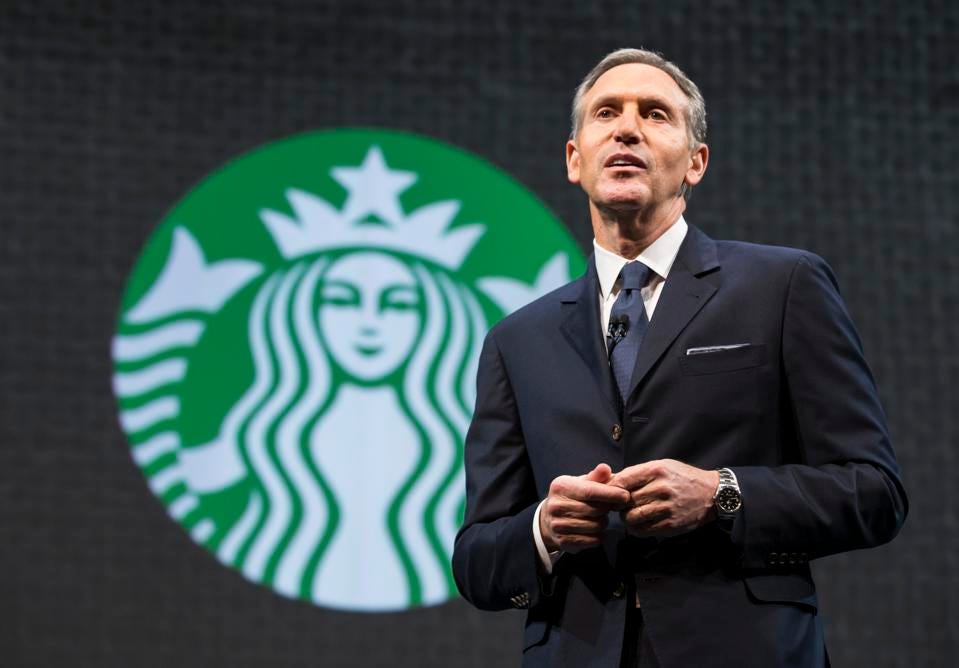The success story of Howard Schultz: From Rags to Riches
Howard Schultz is the co-founder of the Schultz Family Foundation and former CEO/Chairman of Starbucks. He is most known for having penned the success tale of the American international network of coffee shops.

Early Life
Howard Shultz was born in Brooklyn, New York. His great-grandfathers were tailors and barrel manufacturers, like many other Americans, and they were immigrants themselves. Both of his parents dropped out of high school, and after the war, his father took low-wage labor jobs. Initially, he considered playing football as a possible career, but his plans to attend Northern Michigan University on a sports scholarship were never realized.
Read More: A College Dropout who built a $20 billion Company Figma
Instead, he remained at NMU and used college debt and part-time jobs to support himself while he was a student. After getting his degree, Schultz stayed in Michigan and spent one year working at a ski resort. After working as a salesperson for Xerox in New York City, he was hired in 1979 as general manager of Swedish cookware company PAI Partners’ American subsidiary, Hammarplast.
Schultz oversaw the American business of the coffee maker manufacturer Hammarplast. In 1981 he went to the Starbucks Coffee Co. in Seattle, to fulfill their orders for plastic cone filters for the first time.
Success Story
Howard Schultz was hired by Starbucks to serve as the company’s director of marketing and sales operations. The company solely sold coffee beans at the time. He transformed Starbucks into his life’s work in just one year. Then he thought that Starbucks ought to sell coffee drinks in addition to coffee beans.
He had this notion while traveling to Milan, Italy. This idea did not interest the Starbucks owners. After that, he decided to establish his own coffee shop, despite the significant financial difficulty. Nevertheless, he was able to secure funding and established three Il Giornale espresso cafes. The business later merged with Starbucks. Under Schultz’s leadership, Starbucks, with its headquarters in Washington, has undergone a significant expansion from 11 locations to more than 30,000.
Originally a regional coffee company, Starbucks has become the world’s leading coffee brand. In 1992, Schultz floated the company on the stock market and used the $271 million value to increase the number of stores in a series of well-publicized coffee wars. Schultz led a roughly $100 billion increase in Starbucks’ market cap from 2008 to 2017.
After 37 years of active management at Starbucks, Schultz announced his retirement on June 4, 2018, saying that he was considering running for president of the United States among other things. In the 2008’s financial crisis, Schultz took back his position as CEO.
Howard Schultz published a book in 2004 named, “Power of Appreciation: How Positive Thinking Can Change Your Life,” The book quickly rose to fame worldwide. In it, he argues that cultivating an attitude of appreciation and optimism is essential for success in any endeavor.
Schultz has committed his time to assisting others in achieving their goals in recent years and has emerged as an outspoken supporter of social responsibility. He also established the Schultz Family Foundation, which aims to open doors for those experiencing obstacles to achievement.
Its concentration is on underprivileged groups, such as persons of color, and youth transitioning into adulthood. In 2020, with a $4.3 billion net worth, Schultz was ranked by Forbes as the 209th-richest American.
Starbucks’ success story is entirely due to Howard Schultz. After all, Schultz was the one who transformed a little Seattle coffee shop into the most well-known coffee franchise in the world. He became a great company leader by taking risks, trying novel ideas, and remaining consistent and unwavering in his efforts.

I am a law graduate from NLU Lucknow. I have a flair for creative writing and hence in my free time work as a freelance content writer.


